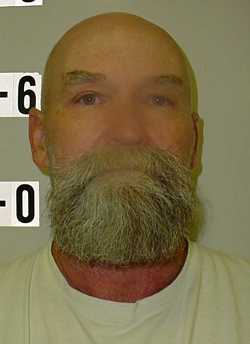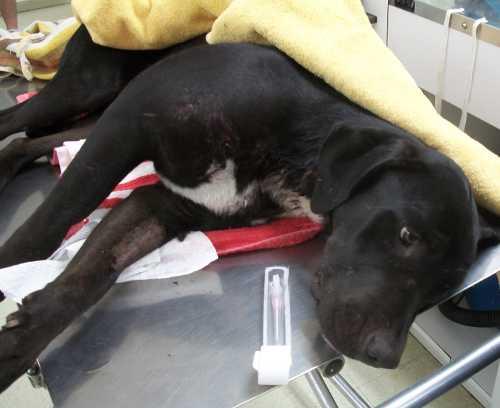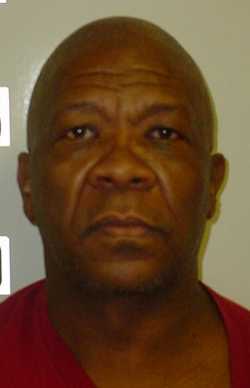CLEARLAKE, Calif. – On Thursday four more witnesses took the stand in the preliminary hearing of three local men accused of a June shooting that killed a small boy and left several of his family and friends injured.
The preliminary hearing for Kevin Ray Stone, 29, of Clearlake, and Paul William Braden, 21, and Orlando Joseph Lopez, 23, marked its fifth day on Thursday, as District Attorney Don Anderson continued to work on building a murder case against the three.
The men are charged with the June 18 killing of 4-year-old Skyler Rapp in an attack that also seriously injured his mother, Desiree Kirby, and wounded Kirby's boyfriend, Ross Sparks and his brother, Andrew Sparks; and friends Ian Griffith and Joseph Armijo.
Charges against Stone, Braden and Lopez include murder, mayhem, numerous counts of attempted murder and assault with a deadly weapon, and many special allegations for the shooting, which police have said was the worst in city history.
Called first to the stand Thursday was Janet Leonor, who lives on 16th Avenue with her granddaughters, Ashli Athas and Alana Conatser, and Athas' boyfriend Leonardo Lopez – Orlando Lopez's younger brother – and their young son.
Leonor said she knew Orlando Lopez, had seen Braden at her home but didn't know him, and didn't know Stone.
On June 18, Leonor said she was at home all day, as was Athas. She recalled several of her granddaughter's friends were over, playing “beer pong” in the backyard. Orlando Lopez and Braden arrived at around 6 p.m. and were gone by 10 p.m.
At some point between 8 p.m. and 9 p.m., Leonor saw Lopez and Braden and some others in her garage at a work bench, but couldn't see what they were doing because they were behind a car.
“I don't know exactly what they were doing,” she said. “I saw them in there and I told them to get out. They had no business in my garage.”
After the men left the garage, Leonor closed it up, and said no one else went in, as the only way to open the door was from within her home.
The next day Leonor – who kept her garage tidy – noticed a hacksaw and a regular saw lying on the work bench and hung them back up. She also discovered bolt that had been cut on the work bench. A few days later she turned the saws and bolt over to Clearlake Police Det. Tom Clements.
Later that night, at around 10 p.m., she said she heard a vehicle pull up and Braden – who she described as “tall and bald” at that time – left.
Leonor said she doesn't want alcohol brought to her home, but the young people brought it anyway. She didn't see anybody drinking but said there were empty beer cans everywhere.
She estimated as many as a dozen people were over at her home that day, but she couldn't name all of them. “They come over frequently but I just don't put my nose in their business,” she said.
After 10 p.m., everyone else was gone, and Athas and Leonardo Lopez had gone to bed, but Leonor said she could see the light on under their door. “I did not watch him but I knew he was in the house,” she said of her granddaughter's boyfriend.
The couple never get up before 1 p.m., and they were still in bed the next morning – Sunday, June 19 – when Leonor left for church.
Following Leonor to the stand was the 18-year-old Athas, who has been living with Leonardo Lopez at her grandmother's house for about two years. They have a 1-year-old son.
Athas said she first met Braden last year and had seen him only about half a dozen times since then. She knew of Kevin Stone but hadn't met him; however, she said she recognized him as the driver of a vehicle that pulled up to her house late on June 18.
Her testimony conflicted with her grandmother's in several ways, including the time she believed Braden and Orlando Lopez separately arrived at her home – between 2 p.m. and 3 p.m. She said she thought Lopez walked there, and that Braden was dropped off by his father.
Athas said she and her friends weren't drinking or playing beer pong that day, that the beer cans her grandmother reported were from a different day.
She recalled Braden in a cell phone conversation in which he threatened to fight someone. He left the home around 5 p.m. or 6 p.m. with Orlando Lopez and came back about 45 minutes later.
When Braden returned, Athas said he was carrying a black shotgun wrapped in a green-colored plaid jacket.
“I didn't know it was a gun at first,” she said.
She said Braden sat on her patio, pumping and opening the shotgun. He then allegedly asked, “'Hey, can I go saw this off?'” He was referring to the shotgun handle.
Athas said Leonardo Lopez told Braden he could, and then he went with Braden and another man – an alleged member of a local gang, the Avenue Boys – into the garage. She later saw one of the men throw the sawed off handle into a recycling bin. Braden allegedly put duct tape around the remaining handle.
According to Athas, Braden then loaded the shotgun with bright green shells. Braden said “he didn't bring the gun to Clearlake for nothing. He wanted to use it,” Athas said.
He then is alleged to stated several times, “I'm bored, let's go shoot somebody,” Athas said.
But she added, “We weren't really paying attention. It was getting old.”
When Stone pulled up later that night, Athas said he didn't get out of the vehicle. After Stone's arrival, Athas said she saw neither Orlando Lopez nor Braden the rest of the night.
The next day her father called to ask, “Why did I heard your boyfriend's name over the scanner?” Her father told her that he'd heard Leonardo Lopez was involved in the fatal shooting.
Later, while Leonardo Lopez was at the Clearlake Police station speaking to police, Athas said Braden called Lopez's cell phone, which he had left at home.
Athas, who said her family is friends with the family of Skyler Rapp, said of her conversation with Braden, “It was kinda like my family that he shot at, and he said, 'I'm so sorry, I'm so sorry.'”
She added, “I was upset and I told him, and I hung up on him.”
Athas would speak to Clearlake Police Sgt. Tim Celli on June 20, telling him that Braden wasn't at the house and stating she couldn't see the driver of the vehicle that picked him up.
However, that story changed by June 21, when she spoke with Celli again and admitted that she had lied due to fear of retaliation, an issue Doug Rhoades, Stephen Carter and Komnith Moth – the defense attorneys for Braden, Lopez and Stone, respectively – would pursue closely in their separate cross-examinations of Athas.
Athas said she was afraid because she had heard that Braden's family was in the Aryan Brotherhood and that his father was a Hells Angel member.
Leonardo Lopez also had received a phone call from a female friend of Skyler Rapp's family, who said that the family had indicated they would go after Lopez's sister, Whitney, and her unborn child, as well as Athas and her son, and the rest of the Lopez family.
But Athas said she was motivated to overcome her fear and tell Celli the truth because of the slain little boy who “didn't deserve it.” She also eas upset “that Paul was almost getting away with it.”
Carter asked Athas about her knowledge of the “Avenue Boys,” a local gang of young men who live in the city's Avenues area. She said she used to go to school with them, and one of her friends dates an Avenue Boy. “They just used to dress up in red,” she said.
Anderson made frequent objections that Hedstrom sustained as Carter attempted to ask Athas more questions about the group, including members she knew. During questioning she denied Leonardo Lopez was a member of the group, and she also maintained he was not involved in a fight on June 9 in which Sparks' cousin Josh Gamble was assaulted.
A borrowed vehicle, and views of the scene
During the afternoon session, Crystal Painchaud – cousin of Leighann Painchaud, Stone's girlfriend – testified to loaning her 1989 Nissan Axxess to Leighann Painchaud and Stone on the night of the shooting, estimating to police that the couple came by to pick up the keys around 10:30 p.m.
They were supposed to return the vehicle later that night, but instead Leighann Painchaud arrived at about 11 p.m. to deliver a key ring with all of Crystal Painchaud's keys except the vehicle key. Leighann Painchaud claimed to have left it parked at her cousin's apartment in her parking spot, but it wasn't there, and she stopped answering her cell phone.
Crystal Painchaud said she found out on Facebook at about 11:30 p.m. that night that a shooting had taken place. She said she then called police to report her missing vehicle.
She and a friend later went driving around town trying to find it. They came up to a police roadblock on Lakeshore near the police station, so they went down a back road and found the vehicle crashed at the intersection of Lupoyoma and Koloko.
Painchaud said she got into the car and found an unexpended shotgun shell sitting on the passenger seat. She picked it up to show her friend, who said to put it down. She called police to tell them she had found the vehicle; they told her to go home and wait for them.
The day's last witness was Clearlake Police Det. Tim Alvarado, one of the case's investigators who arrived at the shooting scene early on the morning of Sunday, June 19.
By the time Alvarado arrived, Skyler Rapp and the rest of the shooting victims had been transported, Alvarado said.
He said as he walked around the scene, he observed several green expended shotgun shells on the ground near a fence separating Sparks' and Kirby's home from a neighbor's, along with holes inside the apartment building, blood stains on the ground and a cell phone.
He said they found evidence of two kinds of ammunition, smaller diameter pellets like bird shot and larger double ought buckshot.
Sgt. Tim Celli called Alvarado to alert him to a possible suspect vehicle – which turned out to be Painchaud's Axxess that Stone is alleged to have crashed at the intersection of Lupoyoma and Koloko.
Alvarado recounted an interview with a neighbor of Sparks' and Kirby's who witnessed the first blasts of gunfire and saw Skyler Rapp fall to the ground, where she reported he lay shaking.
The woman claimed she saw both Orlando Lopez and Paul Braden with shotguns at the fence, but during testimony Alvarado said the woman failed to pick the two men out of photo lineups.
Alvarado attended Skyler Rapp's autopsy in Sacramento on June 22. The pathologist said the child suffered several entry wounds, most of them “through and though.”
According to Alvarado, the pathologist ruled the child's cause of death as multiple gunshot wounds.
The shotgun blasts struck “essentially every major organ in the child's body,” perforating the boy's heart, both lungs, hitting his spinal cord and damaging his liver, Alvarado said.
Testimony will resume Friday morning.
E-mail Elizabeth Larson at This email address is being protected from spambots. You need JavaScript enabled to view it. . Follow Lake County News on Twitter at http://twitter.com/LakeCoNews, on Tumblr at www.lakeconews.tumblr.com, on Facebook at http://www.facebook.com/pages/Lake-County-News/143156775604?ref=mf and on YouTube at http://www.youtube.com/user/LakeCoNews .










